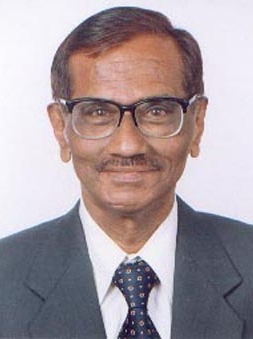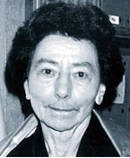In the sixth century B.C. the religion of Parsva counted among its followers a Ksatriya couple living at Kundapura (according to the Svetambara tradition), in the northern quarter of Vaisali (modern Besarh, about fifty kilometers away to the north pf Patna in Bihar), in the Videha country. The man, Siddhartha, was a chief of the clan of the Jnatr, belonging to the gotra, Kasyapa, whereas his wife Trisala was closely connected to the reigning families of Vaisali (capital of the Licchavis) and of Pataliputra, the capital of Magadha. They called their junior son Vardhamana ‘prospering’ (name which was later on interpreted as signifying ‘giver of prosperity’). It was on him the Jains later on conferred the honorific title of Mahavira (occasionally abridged in Vira) and of Jina.
According to the Svetambaras, he married Yasoda, who belonged to his own social class; he had a daughter, Anavadya, who was married to a Ksatriya, a certain Jamali. Thus, tradition emphasizes that this family completely belonged to aristocracy, and vigorously refused to let it be linked with the Brahmanic class (an allegation was even made that Mahavira’s embryo had been transferred from the womb of a Brahman into that of Trisala). (Page… 6) (1) In some traditional biographies of Mahavira there is no reference to the transfer of embryo to his marriage. It is well-known that the Buddha, who was a few years younger than Mahavira, also was of a princely lineage.
In the beginning, Vardhamana lived as a layman, yielding to the wishes of his parents. At the time of their death, he was thirty years old and was firmly resolved to leave the world. He undertook this step to realize his project, having been authorized by his elder brother. He distributed all his wealth; then at the end of a year he left his country and, at the beginning of winter, he embraced the life of a religious mendicant. After three months, in the utmost severity of cold season, he renounced wearing clothes. This is the first measure, which separates him from Parsva: it indicates his penchant for ascetic practices, of which, it appears, and contrary to Buddha, he has always admitted the total and perfect efficacy. Solitary, he devoted himself to meditation for two years and two months and imposed on himself extremely severe fasts.
Then began his peregrinations, which he pursued for twelve years. It took him across Magadha up to the Western boundary of Bengal. An old ballad shows him assailed by inclement weather, by the hostile roughness of animals and plants, by human wickedness and persecutions, while he kept an unperturbed equanimity and welcomed pleasure and pain with a constant indifference.
Already in the first two years of his rigorous asceticism, he perfected his knowledge and elaborated the fundamental principles of the religious life which he organized later on. He progressed towards omniscience which finally he fathomed during the second period, on a summer night, under a sal tree on the northern river of Rijuvaliya near Jrmbhikagrama.
His greatness, in the meantime, was recognized, and the animosity with which he had been beset gave place to respect. He continued with his itinerant life which ceased only shortly before his shelter, roaming in a limited area of the Gangetic plain in the Magadha country, Anga and Videha (almost the present Bihar). But he used to interrupt his journeys during the monsoon, following the example of other Indian religious mendicants. Henceforth, he used to preach, sometimes on the outskirts of a town, before huge audiences, according to tradition, in which were crowded all the sections of the society, including noblemen and princes. Indeed, the moderns have emphasized that at first he had addressed his equals, the Ksatriyas, often the cultivated nobles, exactly as was done by the Buddha, and not the humble folks. He appears besides to have been supported by his parents either at Vaisali or at Rajagraha successively governed by Srenika and Kunika, the same whom the Buddhists call Bimbisara and Ajatasatru).
After forty-two years of ascetic life, Vardhamana died, or rather attained to Nirvana. At Pava (near the present Patna), at seventy-two years of age on a date which one had endeavored to work out by reconciling the date of various traditions. It appears indubitable that one must discard 527 B.C., although the Jains began one of their chronologies from this year. Certain scholars favour the year 468 B.C., whereas Jacobi, followed by Schubring favoured 447 B.C; the Nirvana of Mahavira preceded that of Buddha.
One knows but little about the personality of the Jina. He appears to have been of a proud character of not so affable temperament as that of Buddha or of Parsva. If, as it is probable, the Jain scriptures have kept some traits of his personality, it appears one can recognize in him a systematic mind, a propensity for classifications and categories (which are not rare in the Indian works), a taste for numbers, calculations, geometric figures and a tendency to convince rather than to persuade. He nevertheless did not disdain resorting to parables, in which we see a man of experience, well informed about the life of his contemporaries, and, besides, interested in nature, expressing himself.
It is the womenfolk whom the preaching of Mahavira has most powerfully moved. Though one has to be cautious where numbers are concerned, the ratios are probably respected when the community is estimated, at the death of the prophet, at 14,000 monks, and 55,000 men followers, 36,000 nuns and 318,000 female followers.
Although Mahavira and Buddha had been contemporaries, had traversed the same regions, frequented the same circles, it is not said whether they met. Did they avoid each other? The Jains point out, on the contrary, the relation of their master with Makkhali Gosala, the chief of the Ajivika community (which is likewise mentioned by the Buddhist canon). They present him as a pupil of Vardhamana. Mahavira was in his second year of asceticism when Gosala was accepted as a disciple. They were estranged at the end of six years, then met again sixteen years after, were engaged in a violent controversy, and Gosala died a little later. In fact, it appears clearly that Mahavira had been influenced, if not by the doctrine, at least by certain practices of the Ajivika sect, which was apparently constituted even before the two men had met each other and who, assuredly, promoted a very rigorous asceticism.
 Bal Patil
Bal Patil
 Prof Dr. Colette Caillat
Prof Dr. Colette Caillat
 Prof. Dr. Adinath Neminath Upadhye
Prof. Dr. Adinath Neminath Upadhye
